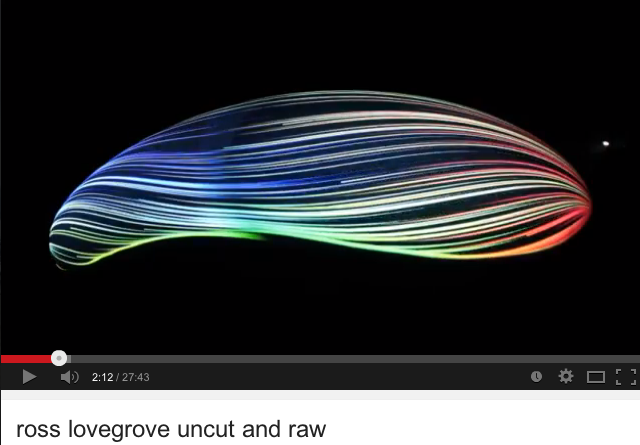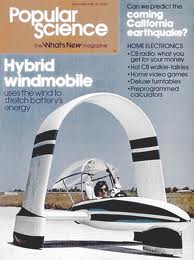 09-20-2020, 01:16 AM
09-20-2020, 01:16 AM
|
#1 (permalink)
|
|
Banned
Join Date: Nov 2017
Location: Australia
Posts: 2,060
Thanks: 107
Thanked 1,608 Times in 1,137 Posts
|
Low drag shape design
As I have often stated, in modifying cars I think by far the best approach is to measure what you have and then make specific modifications, testing each one as you proceed.
But what about a vehicle (including a trailer) that is being designed from scratch?
I think in that case the best approach is to look at the lowest drag vehicles that have ever been run on roads - and that's solar race cars.
The Leading Edge (Tamai) is I think the gold standard book - but it's also pretty complicated.

But there is one book that has an excellent, short and accessible chapter on ultra low drag aero. It's Speed of Light - the 1996 World Solar Challenge. It was published by the University of New South Wales (here in Australia) and the cheapest price I can find it for is in the link (Australian dollars).
The chapter on aero design is only 16 pages long but it covers the real essentials, including:
- attached flow
- wetted area
- boundary layers
- surface finish
- induced lift and ground interference drag
- wing tip drag
- frontal area
- interference drag
- ventilation drag
- side wind stability
- pitch stability
The chapter is by Clive Humphris, who was a Ford Australia aerodynamicist, designer of two solar race cars (including a second placegetter) and also co-designer of a world champion ultra mileage vehicle.
He summarises the best approach as series of rules, eg the second rule is that wetted area should be minimised while ensuring flow remains attached.
So if you're interested in developing a low drag vehicle from scratch (and none of the vehicles mentioned in the chapter have a Cd higher than 0.125!), this might be a book to look at.
|
|
|

|
|
The Following 2 Users Say Thank You to JulianEdgar For This Useful Post:
|
|
 Today Today
|
|
|
|
 Other popular topics in this forum...
Other popular topics in this forum...
|
|
|
|
 09-20-2020, 01:38 AM
09-20-2020, 01:38 AM
|
#2 (permalink)
|
|
Banned
Join Date: Nov 2017
Location: Australia
Posts: 2,060
Thanks: 107
Thanked 1,608 Times in 1,137 Posts
|
|
|
|

|
|
The Following User Says Thank You to JulianEdgar For This Useful Post:
|
|
 09-20-2020, 05:43 PM
09-20-2020, 05:43 PM
|
#3 (permalink)
|
|
Master EcoModder
Join Date: Aug 2012
Location: northwest of normal
Posts: 29,418
Thanks: 8,367
Thanked 9,125 Times in 7,534 Posts
|
https://en.wikipedia.org/wiki/Pattern_language
Quote:
This article is about the structured design approach by architect Christopher Alexander. For other uses, see Pattern language (disambiguation).
A pattern language is an organized and coherent set of patterns, each of which describes a problem and the core of a solution that can be used in many ways within a specific field of expertise. The term was coined by architect Christopher Alexander and popularized by his 1977 book A Pattern Language.
A pattern language can also be an attempt to express the deeper wisdom of what brings aliveness within a particular field of human endeavor, through a set of interconnected patterns. Aliveness is one placeholder term for "the quality that has no name": a sense of wholeness, spirit, or grace, that while of varying form, is precise and empirically verifiable.[1] Some advocates[who?] of this design approach claim that ordinary people can use it to successfully solve very large, complex design problems.
|
Might have application to someone's solar home.
________________
Se also Ross Lovegrove

__________________
.
.Without freedom of speech we wouldn't know who all the idiots are. -- anonymous poster
___________________
.
.tragectory: Line goes down and to the right.
|
|
|

|
|
The Following User Says Thank You to freebeard For This Useful Post:
|
|
 09-22-2020, 11:03 PM
09-22-2020, 11:03 PM
|
#4 (permalink)
|
|
Master EcoModder
Join Date: Feb 2010
Location: Elmira, NY
Posts: 1,794
Thanks: 320
Thanked 361 Times in 300 Posts
|
I have 75 technical books in my library. I would rate them on degree of difficulty. A mechanic uses arithmetic. A technician uses advanced algebra and an engineer or designer uses calculus. I have both Tamai and Katz along with a college text on fluid mechanics. A book is like a tool or a set of tools. An elegant solution is both simple and robust.
|
|
|

|
|
The Following User Says Thank You to Grant-53 For This Useful Post:
|
|
 09-23-2020, 01:20 PM
09-23-2020, 01:20 PM
|
#5 (permalink)
|
|
Master EcoModder
Join Date: Jan 2008
Location: Sanger,Texas,U.S.A.
Posts: 16,534
Thanks: 24,520
Thanked 7,436 Times in 4,817 Posts
|
wetted area
Quote:
Originally Posted by JulianEdgar

As I have often stated, in modifying cars I think by far the best approach is to measure what you have and then make specific modifications, testing each one as you proceed.
But what about a vehicle (including a trailer) that is being designed from scratch?
I think in that case the best approach is to look at the lowest drag vehicles that have ever been run on roads - and that's solar race cars.
The Leading Edge (Tamai) is I think the gold standard book - but it's also pretty complicated.

But there is one book that has an excellent, short and accessible chapter on ultra low drag aero. It's Speed of Light - the 1996 World Solar Challenge. It was published by the University of New South Wales (here in Australia) and the cheapest price I can find it for is in the link (Australian dollars).
The chapter on aero design is only 16 pages long but it covers the real essentials, including:
- attached flow
- wetted area
- boundary layers
- surface finish
- induced lift and ground interference drag
- wing tip drag
- frontal area
- interference drag
- ventilation drag
- side wind stability
- pitch stability
The chapter is by Clive Humphris, who was a Ford Australia aerodynamicist, designer of two solar race cars (including a second placegetter) and also co-designer of a world champion ultra mileage vehicle.
He summarises the best approach as series of rules, eg the second rule is that wetted area should be minimised while ensuring flow remains attached.
So if you're interested in developing a low drag vehicle from scratch (and none of the vehicles mentioned in the chapter have a Cd higher than 0.125!), this might be a book to look at. |
Only wing-based vehicles would be associated with wetted area. Wings, as basic shapes for real passenger cars are not recommended. Single-and duel-passenger solar cars, which require the driver/passenger to be shoe-horned in, are already as large as the largest passenger cars ( 1991 Buick Roadmaster / Chevrolet Caprice ).
To make them user -friendly to a typical family, they'd have to have the dimensions of a box-truck.
Half-bodies, based on streamlined bodies of revolution ARE recommended as the basis for passenger cars.
__________________
Photobucket album: http://s1271.photobucket.com/albums/jj622/aerohead2/
|
|
|

|
 09-23-2020, 01:24 PM
09-23-2020, 01:24 PM
|
#6 (permalink)
|
|
Master EcoModder
Join Date: Jan 2008
Location: Sanger,Texas,U.S.A.
Posts: 16,534
Thanks: 24,520
Thanked 7,436 Times in 4,817 Posts
|
wing-based car
Quote:
Originally Posted by JulianEdgar

|
Toyota offered a wing-derived 'Ra-Ra' solar car for sale in Japan, in the 1990s. I never saw one on the streets when I was over there.
__________________
Photobucket album: http://s1271.photobucket.com/albums/jj622/aerohead2/
|
|
|

|
 09-23-2020, 01:41 PM
09-23-2020, 01:41 PM
|
#7 (permalink)
|
|
Master EcoModder
Join Date: Aug 2012
Location: northwest of normal
Posts: 29,418
Thanks: 8,367
Thanked 9,125 Times in 7,534 Posts
|
Quote:
|
Single-and duel-passenger solar cars,
|
This explains the tail-gunner seating position.
A wing-based vehicle:

__________________
.
.Without freedom of speech we wouldn't know who all the idiots are. -- anonymous poster
___________________
.
.tragectory: Line goes down and to the right.
|
|
|

|
|
The Following User Says Thank You to freebeard For This Useful Post:
|
|
 09-23-2020, 02:01 PM
09-23-2020, 02:01 PM
|
#8 (permalink)
|
|
Master EcoModder
Join Date: Jan 2008
Location: Sanger,Texas,U.S.A.
Posts: 16,534
Thanks: 24,520
Thanked 7,436 Times in 4,817 Posts
|
sail-car
Quote:
Originally Posted by freebeard

This explains the tail-gunner seating position.
A wing-based vehicle:
 |
So, now consider it expanded to accept a family of four, maybe pets, and enough luggage for holiday travel. Powertrain, offset-collision protection. Rollover roof crush standards, height limitations, bumpers, lights, etc.. 
__________________
Photobucket album: http://s1271.photobucket.com/albums/jj622/aerohead2/
|
|
|

|
 09-23-2020, 03:21 PM
09-23-2020, 03:21 PM
|
#9 (permalink)
|
|
Master EcoModder
Join Date: Aug 2012
Location: northwest of normal
Posts: 29,418
Thanks: 8,367
Thanked 9,125 Times in 7,534 Posts
|
I still don't get how it works at all.
__________________
.
.Without freedom of speech we wouldn't know who all the idiots are. -- anonymous poster
___________________
.
.tragectory: Line goes down and to the right.
|
|
|

|
|
The Following User Says Thank You to freebeard For This Useful Post:
|
|
 09-23-2020, 04:29 PM
09-23-2020, 04:29 PM
|
#10 (permalink)
|
|
Master EcoModder
Join Date: Jan 2008
Location: Sanger,Texas,U.S.A.
Posts: 16,534
Thanks: 24,520
Thanked 7,436 Times in 4,817 Posts
|
how
Quote:
Originally Posted by freebeard

I still don't get how it works at all.
|
It's just like a sailboat. Air passes over the airfoil obliquely and a net lift vector is generated, acting ahead and to the side of the vehicle. The car is impelled by the longitudinal component of the vector, attempting to 'catch' the low pressure which is forever moving ahead of it, as long as there's sufficient wind, and at an acceptable angle of attack to the foil.
This guy came through Lubbock, Texas and was pulled over for speeding on State Highway-82. He told the DPS officer that he thought '82' was the posted speed limit. The officer let him go. 
__________________
Photobucket album: http://s1271.photobucket.com/albums/jj622/aerohead2/
|
|
|

|
|
The Following User Says Thank You to aerohead For This Useful Post:
|
|
|